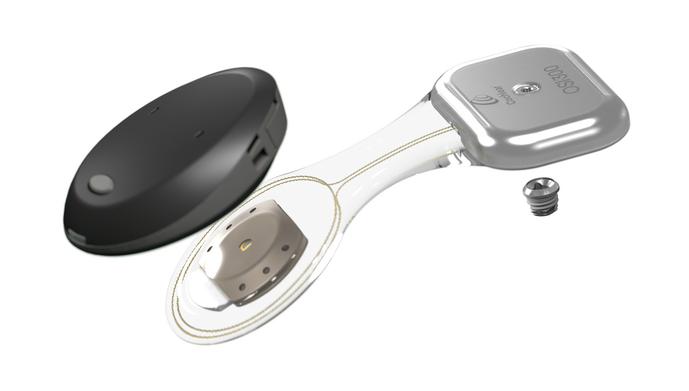Single-sided deafness candidacy and solution information
What you'll find on this page
- Treatment Options for Single-Sided Deafness
- Single-Sided Deafness White Paper
- Impact and Considerations for Single-Sided Deafness
Single-sided deafness and unilateral hearing loss can be sudden or can happen over time. When it does, it can impact you or your patients' day-to-day life on many levels. Although you or your patients may find different ways to cope, treating the hearing loss can help restore not only hearing, but also quality of life. Around the world, hundreds of thousands of people are benefitting from Cochlear hearing solutions.
They’re connected to sound and to each other. You or your patients could be too.
Treatment Options for Single-Sided Deafness
Cochlear has multiple treatment options for Single-Sided Deafness that offer unique benefits depending on the patients' individual needs. Whether a Bone Conduction Solution or a cochlear implant, Cochlear has the right solution for any candidate experiencing Single-Sided Deafness.
Download Impact and Considerations for SSD Brochure
Bone conduction implant with the Cochlear™ Osia® System
The Osia® System sends sounds to the normal hearing ear to help enhance hearing.
Indications
- Single-Sided Deafness (SSD)
- 5 years of age or older
- Patients who have profound sensorineural hearing loss in one ear and normal hearing in the opposite ear (i.e., single-sided deafness or “SSD”).
- The pure tone average air conduction hearing thresholds of the better hearing ear should be better than or equal to 20 dB HL (measured at 0.5, 1, 2, and 3 kHz)
- The Osia System for SSD is also indicated for any patient who is indicated for an air-conduction contralateral routing of signals (AC CROS) hearing aid, but who cannot or will not use an AC CROS.
- Prior to receiving the device, it is recommended that an individual have experience with appropriately fitted air conduction or bone conduction hearing aids.
Potential Benefits
- Improved speech understanding in noise1,2
- Improved speech understanding in quiet1-4
- Improved quality of life5
- Better transmission of high frequency sounds compared with other bone conduction implant systems6-7
- Proven transmission of natural sound8
Learn more about the Cochlear Osia System
Cochlear implant with the Cochlear™ Nucleus® System
A cochlear implant helps restores hearing to the deaf ear.
Indications
- Unilateral Hearing Loss (UHL) / Single-Sided Deafness (SSD)
- 5 years of age or older
- In the ear to be implanted, a severe to profound sensorineural hearing loss defined as a PTA at 500 Hz, 1000 Hz, 2000 Hz and 4000 Hz of > 80 dB HL.
- In the contralateral ear, normal or near normal hearing is defined as a PTA at 500 Hz, 1000 Hz, 2000 Hz and 4000 Hz ≤ 30 dB HL.
- In the ear to be implanted, an appropriately fit unilateral hearing device demonstrates a limited benefit through a score of less than or equal to 5% on a Consonant Nucleus Consonant (CNC) word test.
Potential Benefits9-17
- Improved speech understanding in noise
- Improved speech understanding in quiet
- Improved quality of life
- Reduced listening effort
Learn more about the Cochlear Nucleus System
Disclaimer
This material is intended for health professionals. If you are a consumer, please seek advice from your health professional about treatments for hearing loss. Outcomes may vary, and your health professional will advise you about the factors which could affect your outcome. Always read the instructions for use. Not all products are available in all countries. Please contact your local Cochlear representative for product information.
For a full list of Cochlear’s trademarks, please visit our Terms of Use page.







